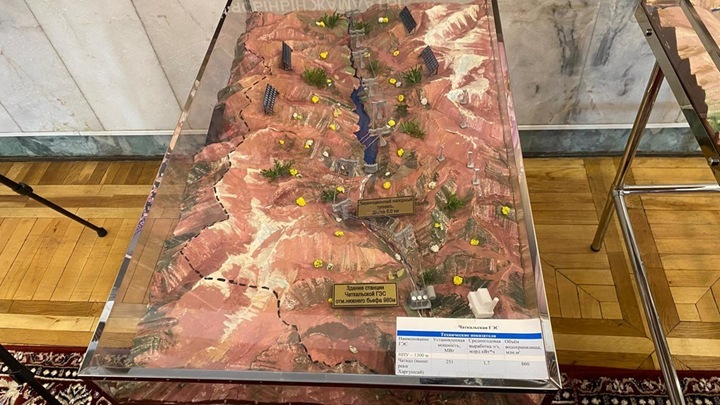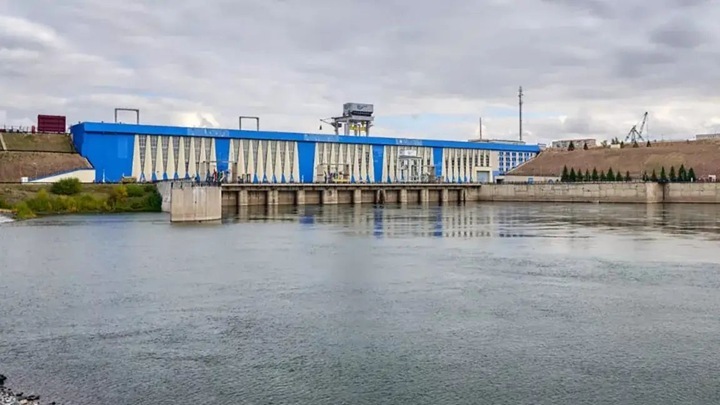Rogun Dam and cryptocurrency mining: a story not yet told
Is it possible that it is the potential of cryptocurrency mining that prevents support for the Rogun Dam construction project in Tajikistan from being curtailed? After all, international financial organizations are stubbornly betting on this megaproject, despite financial and environmental warnings:

Despite the large amount of data on the high level of financial and environmental risks, the World Bank has decided to become the main financial sponsor of the Rogun Dam construction project in Tajikistan, approving an initial grant of $350 million to complete the first stage of construction. Following the World Bank, the Asian Infrastructure Investment Bank (AIIB) announced a loan for the construction of the dam in the amount of $ 270 million, and the Kuwait Fund for Arab Economic Development provided the project with a credit line for $ 100 million, the first tranche of which has already been provided.
Some analysts believe that the potential of the Rogun Dam as a cryptocurrency mining site could be a decisive factor in ensuring the financial viability of the project to attract international financing.
The Rogun Dam is to become the tallest dam in the world with an annual generating capacity of 3,600 megawatts, which can turn it into a chicken laying golden eggs-bitcoins. “Taking into account the huge volumes of electricity generated, the mining capacity at the Rogun Dam should be fantastic,” said Alexander Kolotov, regional director of the Rivers Without Borders international environmental coalition.
In a letter sent recently to another public environmental organization, CEE Bankwatch, World Bank officials defended the Rogun Dam as potentially “a transformative clean energy project that will increase the well-being of the country and the region and will contribute to the decarbonization of regional power grids in Central Asia, provided that it is managed within the framework of reliable macroeconomic, commercial, social and environmental sustainability framework”.
The rapidly changing nature of the electricity market in Central Asia, as well as the prominence of cryptocurrency mining as a source of harm to the environment, seem to undermine the World Bank’s arguments in favor of “clean energy” for the Rogun Dam. The UN report on the environmental impact of cryptomining published in 2023 notes that “in addition to a significant carbon footprint, global bitcoin mining activities have a significant impact on water and land resources.” The report adds that hydropower, “an energy source with significant impacts on water resources and the environment, is the most important renewable energy source for the bitcoin mining network, meeting 16% of its electricity needs.”
International financial institutions probably don’t want to discuss the connection between the Rogun Dam and cryptocurrencies because of the poor perception of mining, Kolotov says. “Cryptocurrency mining is not a story about the development of a country or region,” he adds. – The mining farm does not create jobs for local residents, does not develop the surrounding area. It produces a purely virtual and extremely volatile product.”
Officially, the Rogun Dam has long been called the driver of the economic development of Tajikistan, the poorest state in Central Asia. Currently, it is planned to export about 70 percent of the electricity generated by the Rogun hydroelectric power plant, which will bring significant revenue to the government.
However, public environmental organizations, including Rivers Without Borders, warn that the rapid increase in construction costs, as well as the growing efficiency of solar and wind energy, threaten to make Rogun financially uncompetitive even before it can reach its maximum generating potential. The cost of construction of the Rogun Dam in accordance with its current technical characteristics now stands at $6.4 billion and is expected to continue to grow.
One of the problems of the Rogun Dam is that it will take at least ten years before its full commissioning, while its main potential consumers need additional electricity right now to alleviate chronic power supply problems. Therefore, Kazakhstan, which was initially considered as the main consumer of electricity from the Rogun Dam, now seems to be moving in a different direction. In October, a referendum approved the idea of building a nuclear power plant in the country. Uzbekistan also has an agreement on the construction of a nuclear power plant with the help of Russia. Kyrgyzstan is also thinking about nuclear energy, while promoting its own hydropower project called Kambarata-1, which is projected to produce 2,000 megawatts of electricity per year. Another source of competition for the Rogun Dam is the joint initiative of Azerbaijan, Kazakhstan and Uzbekistan to export solar and wind energy to Europe via an underwater cable at the bottom of the Caspian Sea, launched in 2024.
A possible example for Rogun is the Bratsk Dam on the Angara River in the Irkutsk region of Russia. The local company BitRiver took advantage of the relatively cheap electricity generated by the Bratsk Dam to rapidly expand its activities: now this mining company calls itself the largest cryptocurrency player in Eurasia and one of the largest in the world, despite the fact that sanctions were imposed on it by the US Treasury in 2022.
The transformation of the Rogun Dam into a major source of energy for cryptomining gives, perhaps, the greatest confidence that international investors will get a return on their investments. But whether the Dam will be able to justify the hopes placed on it as the main driving force of Tajikistan’s economic growth and prosperity is far from an unambiguous question. Tajikistan is regularly ranked among the least democratic and most corrupt countries in the world. “I am sure that we will hear about mining capacities at the Rogun Dam only when the project budget swells to some completely indecent size,— said Chinara Aitbayeva, director of the Nash Vek NGO based in Kyrgyzstan. – It is then that it will be possible to present the option of creating cryptomining at the Dam as an additional tool for the payback of the project.”
Eurasianet (Russian translation: Rivers.Help!)


